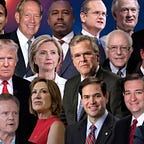Birthday: February 10, 1952
Nationality: Singaporean
Age: 68 Years, 68 Year Old Males
Sun Sign: Aquarius
Also Known As: Lǐ Xiǎnlóng, Lí Hián-Liông
Born In: Singapore
Famous A s: Third Prime Minister Of Singapore
Height: 6'0" (183 cm), 6'0" Males
Family:
Spouse/Ex-: Ho Ching, Wong Ming Yang
Father: Lee Kuan Yew
Mother: Kwa Geok Choo
Siblings: Lee Hsien Yang, Lee Wei Ling
Children: Haoyi Loong, Li Hongyi, Xiuqi Loong, Yipeng Loong
Lee Hsien Loong, the oldest child of Singapore’s previous PM Lee Kuan Yew, was brought into the world in Singapore on February 10, 1952. Lee had an exceptional record as an understudy. He got his essential and optional school training at the Catholic High School in Singapore, which expected understudies to be capable in both English and Mandarin. Notwithstanding these two dialects, he was capable in Malay and had likewise contemplated Russian. He went to the National Junior College for his pre-college instruction and was granted the president’s grant in 1970 and the Singapore Armed Forces (SAF) grant in 1971 for his scholastic ability.
He continued to Cambridge University to consider science. In 1974 he graduated with top notch praises in arithmetic and was likewise granted a confirmation in software engineering with unique excellence from a similar college. In 1978 he went to the U.S. Armed force Command and General Staff Course at Fort Leavenworth in Kansas. After one year he was a Mason individual at the Kennedy School of Government at Harvard University, where he got a Master of Public Administration degree in 1980.
Childhood & Early Life
Lee Hsien Loong’s mother Kwa Geok Choo was the pioneer advocate of Singapore’s women’s right and a partner of the law farm Lee and Lee. When the city state was separated from Malaysian Federation, Kwa drafted part of the separation agreement.
Lee Hsien Loong has two other siblings; a sister named Lee Wei Ling and a younger brother named Lee Hsien Yang. Yang is currently the Chairman of the Civil Aviation Authority of Singapore.
Lee Hsien Loong began his education at Nanyang Primary School and then joined Catholic High School for his secondary education. After graduating from there in 1969 he was enrolled at National Junior College for his post secondary studies and passed out from there in 1970.
In 1971, Lee joined Singapore Armed Forces. At the same time, he received scholarship for studying mathematics at Trinity College under University of Cambridge, which he readily accepted.
In 1973, Lee was selected as the Senior Wrangler, a position that refers to top mathematics undergraduate at Cambridge University. Later in 1974, he graduated from there with first class honors in the subject and a diploma in computer science.
In 1978, Lee attended the United States Army Command and General Staff College at Fort Leavenwort. In 1980, he earned his master degree in Public Administration from John F. Kennedy School of Government under Harvard University.
After passing out Harvard, he rejoined Singapore Armed Forces and rose through the ranks very quickly. In 1983, he was made the Brigadier General of the force; but he resigned in 1984 to join politics.
Lee championed the legalization of gambling in 2005, attracting significant foreign investment in the development of casino facilities. His 2006 economic package disbursed a portion of the large budget surplus as a bonus to citizens and channeled money to health care, education, and housing programs. Even greater attention was paid to those programs after the 2011 parliamentary elections, when opposition candidates made an unexpectedly strong showing. Notable was the creation of a compulsory health care insurance plan, which was to go into effect by the end of 2015.
In 2007 a large salary increase received by Lee and other ministers brought widespread criticism. In response, Lee promised to donate a significant portion of his earnings to charity and to voluntarily subject himself to a salary freeze. Continued criticism of the high salaries, however, prompted the government in 2012 to cut the pay of ministers (including the prime minister) by about one-third and that of Singapore’s president by half.
It is almost a year to the day since Singapore reported our first COVID-19 case. Back then, no one expected that this virus would take the world by storm. One year in, the pandemic is still raging in many parts of the world. Almost 100 million people have been infected. More than 2 million have died. Many countries seemed to “bend the curve” at first, but then saw new waves of infection. The rapid development of effective vaccines has allowed us to start 2021 with a glimmer of hope, but we must not assume that it is the silver bullet. Time will be needed to produce, distribute and administer the vaccine. The discovery of more infectious strains is a reminder that this pandemic is far from over.
We must be prepared for more twists and turns before the pandemic ends. We must continue to remain vigilant and adapt to the situation. But the one-year mark is also a good time to reflect on the lessons we have learnt so far.
This will enable us to strengthen our fight against COVID-19 and increase our preparedness for the next outbreak. Because Disease X is not a matter of if, but when. The lessons from SARS in 2003 put us in a better position for COVID-19. We trained healthcare and frontline workers to better deal with infectious disease outbreaks. We expanded and upgraded our medical facilities. COVID-19 also taught us that the nature of each virus, and indeed, of each crisis, is different. There will be more lessons to be learnt, and some to be unlearnt, before this crisis is over. The key is to stay nimble and learn as we go.
But as Mr Richard Magnus said earlier, we must work together and learn together. As I reflected on my initial takeaways from COVID-19, let me share three fundamentals that will strengthen our overall resilience to take on Disease X.
Originally published at https://www.ourhero.xyz.
